Following the Equator - Chapter XXVIII
- Read more about Following the Equator - Chapter XXVIII
- Log in to post comments
A story told to Twain while crossing Montana in 1895
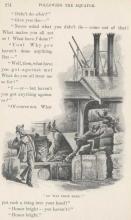
A story told to Twain while crossing Montana in 1895

Twain spends much of Chapter 27 discussing the harshness of the environment, particularly in terms of convicts trying to escape a penal colony at Macquarrie Harbor and the efforts of George Augustus Robinson in bringing in the last of the native Tasmanians to “civilization”. Twain thinks very highly of Robinson's efforts but also seems to realize that his efforts were in vain and in fact brought about the destruction of these people.
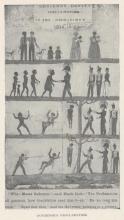
An unexpected visit by a visiting professor from New Zealand causes the faculty of Yale to take a cram course in all aspects of New Zealand so as not to cause offense.
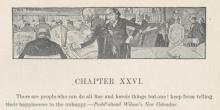
The identity of Mr.Blank, the influential Irishman of chapter 25, is a mystery. Miriam Shillingsburg published an article on him in the Mark Twain Journal in 1993. Ms.Shillingsburg theorizes that Mr. Blank is one of three possible candidates. None of them are Mr. Charles Casey of Pollerton Castle, Carlow, Ireland. It was with Mr. Casey that Sam Clemens had correspondence, May 15, 1876.:
“Of course I don't know what you hold, but I “call” you anyway! This being translated means: Tell me about this thing. Really & truly, now, is there a Twain Club?”
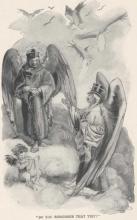
Mark is entranced by an altocumulous undulatus cloud show in the sky. He tells the history of the gold strike in Ballarat and the protests against the mining licensing tax. He then speaks of the refinements of Australian cities and the compact Ballarat English.
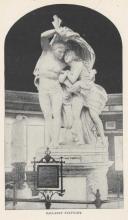
Twain travels from Adelaide to Horsham, in Victoria. He finds a cottonwood tree, of fine detail, like a Kodak, and a peppertree, like an impressionist painting. Outside of town is an agricultural college, the Longerenong Agricultural College, where they grow fruit trees in an arid environment. They had forty pupils, ten were farmers hoping to expand their skills, and the rest city boys getting a trade. The curricula included sheep shearing.
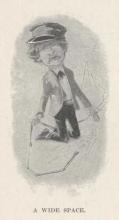
Twain spends most of this chapter illustrating the strengths and weaknesses of the aboriginal peoples, whom he believes are all but extinct. He never met one on his travels in Australia. He stresses the talents of these people, particularly their ability to discern minute details of the landscape, making them superlative hunters and trackers. He describes their ability in drawing as somewhere between De Maurier and Boticelli. Twain gets particular delight in discussing the aboriginal's tolerance for physical pain as well as their adroitness.
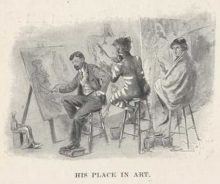
Mark Twain discovers the weet-weet, a two ounce projectile that can be thrown over two hundred yards. The intelligence required for this, as well as aboriginal tracking ability and the boomerang prompts Twain to question why Australian Aboriginals are held in such low esteem. He goes on to illustrate that savage ways the whites have used to deal with those they deem to be savages.
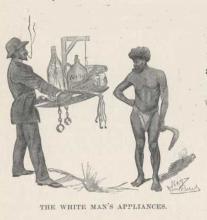
Sam Clemens, wife wife Livy and daughter Clara depart from the North American continent after speaking engagements in Vancouver and Victoria. Narration is from Major Pond's reminiscences published in Eccentricities of Genius.
Mark Twain and company complete the journey from Elmira, New York to the Pacific Ocean, in preparation for his around the world tour. He speaks in Portland, Oregon, Olympia, Washington and Tacoma, Seattle, Whatcom, which became Bellingham, and Vancouver, British Columbia. The entire Pacific Northwest was envolped in smoke from forest fires and Mark suffered from respiratory problems. He visits one more city, Victoria, British Columbia, to speak and depart on the voyage to Australia.